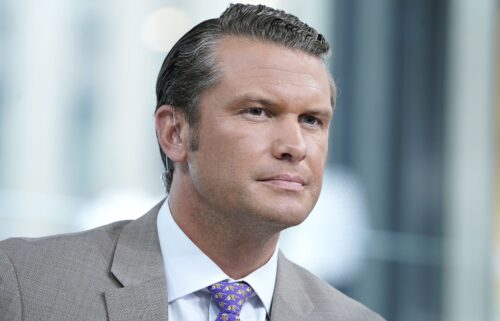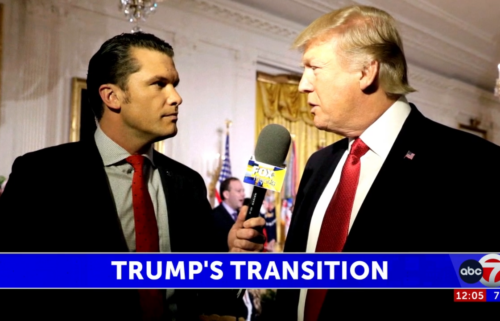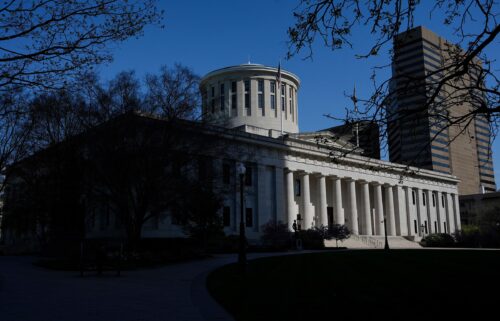What Roger Stone’s trial revealed about Trump and Mueller
Almost six months after special counsel Robert Mueller formally ended his investigation into the Trump campaign’s ties to Russia in 2016, a wealth of new information about Donald Trump’s involvement came out in the criminal trial of his former adviser Roger Stone.
Stone was found guilty on Friday of seven counts, including obstruction of Congress, lying to Congress and witness tampering.
The case grew out of the Mueller investigation, but the jury heard details that — because of the Stone case — were hidden from the public when the Mueller report was released earlier this year. Most surprising: The extent to which Trump and his top advisers appeared to welcome the release of stolen emails and documents damaging to Democrats by WikiLeaks.
Here are the key takeaways.
The Trump campaign didn’t think twice about using information from WikiLeaks
The most significant revelation in the trial was the extent to which Stone was in touch with Trump directly and other campaign officials, and how they eagerly anticipated WikiLeaks’ releases of hacked Democratic emails in 2016.
Witnesses — including former top Trump strategist Steve Bannon and former deputy campaign chair Rick Gates — emphasized the campaign’s enthusiasm about hacks and leaks dating back to April 2016. News of the hacks first broke in June 2016, and WikiLeaks started dumping the stolen documents in July 2016, on the eve of the Democratic National Convention.
Prosecutors showed line charts that visualized Stone’s communications with top Trump officials. The lines spiked around key moments of the Democratic hack and WikiLeaks releases of the stolen data. In all, the prosecutors discussed several phone calls placed between Trump and Stone — often around dates when the hacks were in the news.
That included a July 2016 conversation between Trump and Stone, apparently about what WikiLeaks had lined up for the autumn, ahead of the general election.
“After Mr. Trump got off the phone with Mr. Stone, what did Mr. Trump say?” prosecutor Aaron Zelinsky asked Gates.
“He indicated more information would be coming,” Gates replied.
“It was, in a way, a gift that we had not sought, but was coming out,” Gates added about the WikiLeaks releases during the latter half of the campaign.
In earlier testimony before Gates took the stand, Bannon told the jury Stone was considered the campaign’s conduit to WikiLeaks.
“The campaign had no official access to WikiLeaks or to Julian Assange, but Roger would be considered, if we needed, an access point — an access point because he had implied or told me that he had a relationship with WikiLeaks and Julian Assange,” Bannon testified.
Taken together, prosecutors say, the witness testimony showed Stone’s relentless drive to help Trump, and then to cover up any sordid efforts.
Prosecutor Jonathan Kravis told the jury in his closing argument Wednesday that Stone was motivated to lie to Congress the next year to protect Trump.
If the truth had come out about Stone’s efforts in 2016, “It would look terrible,” Kravis argued. Emails and texts prosecutors showed at trial emphasized his anticipation of WikiLeaks releases and how he was speaking to the Trump campaign about them, the prosecutor added.
“It would look really bad for his longtime associate Donald Trump,” Kravis said.
Mueller hit dead ends
Federal judges have hinted at it, and so did Mueller in his report. But Stone’s trial was the most explicit public acknowledgment that Mueller hit dead ends during his investigation.
Prosecutors investigated Stone for possible hacking, wire fraud and foreign contributions violations, according to previously released court documents. But ultimately he was only charged with process crimes related to his congressional testimony.
Why? It’s still not clear. But one reason may be that Mueller’s team just couldn’t get to all the evidence it needed. The Mueller report noted that some text messages from key players were gone forever, and others in Trump’s orbit refused to testify, citing their Fifth Amendment rights against self-incrimination.
Also consider, for instance, Trump’s written answers to Mueller. The President had conversations with Stone during the campaign. But Trump wrote to Mueller that he did not recall his conversations with Stone and his discussions about WikiLeaks and the Democratic hack.
Gates testified that he couldn’t answer what was said on one call he overheard, because he hadn’t been able to hear exactly what Stone said to the candidate to prompt Trump to believe information was coming.
“Gaps” of evidence that Mueller described in his report “adversely affected the investigation and, in some instances, precluded the special counsel from reaching any conclusion about whether criminal conduct occurred,” federal judge Beryl Howell of the DC District Court noted in a recent opinion in an unrelated case about Mueller’s work.
The gaps included text messages between key witnesses like Bannon and another Trump adviser, Erik Prince, that went missing. At Stone’s trial, prosecutors also noted missing 2017 texts from the defendant. Trump refused to speak directly with prosecutors, other than answering written questions submitted to Mueller through his private lawyers. And Stone himself clearly wouldn’t tell the special counsel what he knew.
During closing arguments in the Stone trial, Kravis described Stone’s alleged failure to tell Congress about written communications he had about WikiLeaks — and explained how it left the House Intelligence Committee with a blind spot as it investigated Russian collusion.
Kravis’ statement highlighted how obstruction, when it happens, prevents investigators from finding the facts.
“The committee never sees or learns what you have seen and learned over the past week at this trial,” Kravis told the jury. “The committee never saw that evidence, and so the committee’s report is not accurate.”
In all, Mueller charged eight people — including Trump advisers Stone, Paul Manafort, Gates, Michael Cohen, Michael Flynn and George Papadopoulos — with lying or obstruction.
House testimony was revealed
For the first time, the public heard recordings made inside the secure deposition room on Capitol Hill where dozens of witnesses testified before lawmakers about Russian meddling. The full three-hour tape of Stone’s September 2017 testimony before the House Intelligence Committee was publicly released as part of the trial, and the jury listened to almost an hour of it.
Two years after that closed-door interview, and three years after the 2016 election, it’s clear that Americans have moved on. Democrats pivoted too, away from Mueller and toward Ukraine.
But there are still plenty of unknowns about the Mueller probe that will be revealed in the future.
Following lawsuits by CNN and BuzzFeed News, the Justice Department was ordered to release hundreds of internal memos and documents from the Mueller investigation. Those have already begun to unlock key clues about how close Mueller was to finding collusion, or what Trump’s closest aides divulged to the feds.
The judge set a schedule for 500 pages to be released each month, a schedule that could last years, and is still considering how the releases may best work for the public. By the time all the documents from the Mueller investigation trickle out, it could take decades.
Trump was saved by the schedule
After Stone’s trial, it’s clearer than ever that Mueller’s moment could have been even bigger.
Attorney General Bill Barr boasted when the report was released earlier this year that he made about 90 percent of the 448-page report available to the public. But the content underneath those redactions turns out to be important.
The parts revealed during Stone’s trial illustrated just how involved the President was in encouraging his campaign’s interest in foreign interference.
Still-redacted parts of the Mueller report appear to detail how Trump was tipped off by Stone about WikiLeaks releases, which he later exploited for his political benefit on the campaign trail. There’s no proof that Trump’s campaign illegally conspired with suspected Russian hackers, but Gates testified that the campaign gleefully and knowingly capitalized on Russian meddling — adding vibrant detail to allegations that were missing in previous rounds.
All of that was kept redacted in the first release of the Mueller report because the Justice Department determined at the time that making those sections public could harm ongoing matters, including disrupting Stone’s right to a fair trial. The Justice Department hasn’t said if it will make a new version of the report available once Stone’s case is closed.
But when it was finally time for some of the Mueller report’s most damning details to be revealed this week, Trump got another break. Washington is now consumed with impeachment — though increasingly, the Ukraine story and the Russia story seem inevitably tied together.
UPDATE: This story was originally published on November 14. It has been updated to reflect Stone’s conviction on November 15.




